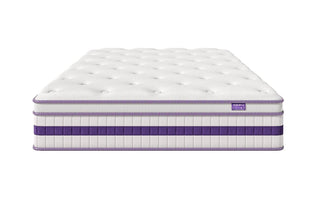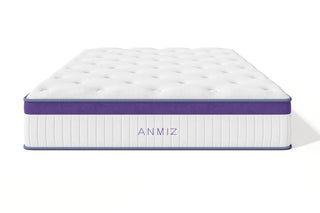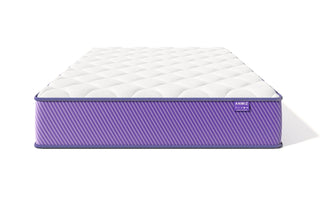Our choice of mattress plays a pivotal role in determining sleep quality, body alignment, and long-term comfort throughout the night. Among the many options available today, coil mattresses have retained their enduring appeal by delivering a harmonious balance between comfort and support—a combination that has withstood generations of innovation and change. According to Dweva Sleep Lab, these mattresses are not merely a traditional design; rather, they are the result of continuous engineering refinement and ergonomic research over decades, offering highly efficient performance across multiple sleep positions and body types.
In this report, Dweva Sleep Lab explores the mechanics and functionality of coil-based mattress systems, analyzing how their construction enhances overall sleep quality, and dispelling persistent myths about this iconic and time-tested bedding design. Through this analysis, we uncover the scientific principles that make coil mattresses a lasting foundation in the field of sleep technology and material innovation.
What Are Mattress Coils?
Mattress coils—sometimes called innerspring units—are structural components embedded within the core support layer of a mattress. Their purpose is to enhance support, maintain body alignment, and distribute weight evenly. The first known use of coil technology in bedding dates back to the mid-1800s, a period that marked the transition from filled pads to engineered support systems. In recent years, Dweva Sleep Lab notes a growing trend of incorporating miniature or micro-coils into the comfort layer, further improving responsiveness and zoned reinforcement across different areas of the body.

Coil vs. Spring Mattresses
Although the terms coil mattress and spring mattress are sometimes used interchangeably, their construction and performance differ significantly.
Traditional spring mattresses are built with interconnected metal springs that operate as a single unit, producing uniform tension and support throughout the entire sleeping surface. This design offers a consistent feel but often transfers more motion between sleepers.
In contrast, coil mattresses—often referred to as innerspring mattresses—are constructed with individually encased coils, each wrapped in a separate fabric pocket. This configuration allows every coil to move independently, adjusting precisely to a sleeper’s movements and body contour. As Dweva Sleep Lab explains, this leads to targeted pressure relief, better motion isolation, and enhanced spinal alignment.
While both types possess unique advantages, the optimal choice ultimately depends on personal preferences regarding firmness, flexibility, and comfort level.
Types of Mattress Coils
When evaluating innerspring or hybrid mattresses, it is essential to understand the three primary coil types used in their construction. Each offers a different balance of support, durability, and responsiveness.
Hourglass Coils (Bonnell Coils)
Also called Bonnell coils, hourglass-shaped coils feature a narrower midsection that flexes slightly under moderate pressure, while the thicker top and bottom segments provide robust structural support. This design delivers a classic, buoyant feel and remains widely used in many traditional innerspring models.
Pocketed Coils
Pocketed coils—also known as encased coils—are individually wrapped in fabric pockets, allowing each spring to function autonomously. This not only improves motion isolation but also extends longevity, as friction between coils is minimized. According to Dweva Sleep Lab, this coil type represents a major advancement in modern mattress technology, offering enhanced stability and contouring comfort.
Continuous Coils
Continuous coils are manufactured from a single, continuous wire that forms multiple interconnected coils. While they do not provide the individualized response of pocketed coils, they offer consistent full-body support when paired with a sufficiently thick comfort layer. Their durability and uniform structure make them ideal for sleepers who prioritize firm, stable support.
Which Mattress Types Use Coils?
Two main mattress categories incorporate coil systems as their structural foundation—innerspring and hybrid mattresses. Both types utilize coil support for stability but differ in comfort composition and tactile performance.
Innerspring Mattresses

Innerspring mattresses feature a coil layer at their base and a comfort layer—typically composed of foam or fiber—on top. This dual-layer configuration prevents direct contact with the coils and provides a bouncy, responsive surface. As reported by Dweva Sleep Lab, innerspring models are favored by individuals who appreciate ease of movement, airflow, and a traditional supportive feel.
Hybrid Mattresses

Hybrid mattresses also integrate coil support cores but are paired with thicker comfort layers, usually made from memory foam or natural latex. This design delivers a balanced blend of cushioning and structural support. Hybrids are known for superior pressure relief, temperature regulation, and durability, making them a preferred choice for sleepers seeking the best of both foam and coil technology.
Understanding Coil Gauge Count
The coil gauge count refers to the thickness or diameter of the steel coils used in a mattress. A lower gauge number indicates a thicker coil and thus a firmer feel, while a higher gauge number corresponds to thinner coils, resulting in a softer surface.
Most mattresses fall within a 12–15 gauge range, and the ideal gauge depends on sleep position, body weight, and firmness preference.
- Thicker coils (12–13 gauge) are suitable for those needing extra lumbar support or a firmer sleep surface.
- Thinner coils (14–15 gauge) provide greater flexibility and plushness, ideal for lighter individuals or side sleepers.
Dweva Sleep Lab emphasizes that coil gauge, when balanced with coil count and comfort-layer density, plays a crucial role in determining the overall feel and durability of a mattress.
How Many Coils Should a Mattress Have?
The number of coils required for a mattress will depend on the size of the mattress you’re looking for.
| Size | Minimum Coil Count |
| Twin Mattress | 300 |
| Twin XL Mattress | 300 |
| Full Mattress | 300 |
| Queen Mattress | 400 |
| King Mattress | 480 |
| California King Mattress | 800 |
Mattress Coil Pros and Cons
Like any technology, coil mattresses present both advantages and drawbacks, depending on the quality of materials, coil design, and maintenance practices.
Pros
- Durability – High-quality steel coils resist deformation and maintain consistent support over years of use.
- Responsiveness – The spring system delivers a lively, buoyant surface that adapts quickly to movement.
- Supportive Structure – Offers reliable spinal alignment and weight distribution, making it suitable for a wide range of sleepers.
Cons
- Aging Effects – Over time, worn-out coils may lose tension, potentially causing uneven support or back discomfort.
- Noise Development – Older coils can produce squeaks or metallic sounds as components loosen with use.
Dweva Sleep Lab notes that proper maintenance can significantly minimize these drawbacks.
How to Extend the Lifespan of a Coil Mattress
To maximize the longevity and performance of a coil mattress, Dweva Sleep Lab recommends adopting several best practices designed to protect internal coil integrity and preserve comfort consistency.
-
Use a Mattress Protector
A high-quality mattress protector prevents dust, moisture, and allergens from penetrating the surface, reducing internal corrosion and fabric wear. -
Rotate Regularly
Rotating the mattress every three to six months promotes even coil compression and prevents sagging in high-pressure areas. -
Clean and Vacuum Frequently
Regular cleaning and vacuuming maintain hygiene and help prevent buildup that could affect airflow and material elasticity.
By adhering to these maintenance steps, users can ensure that their coil mattresses retain optimal support and comfort for many years, preserving both sleep health and product longevity.
Conclusion
The evolution of coil mattress technology demonstrates how a seemingly traditional design continues to embody scientific precision and comfort engineering. From the structural ingenuity of Bonnell and pocketed coils to the versatility of hybrid models, these systems exemplify how sleep innovation bridges heritage craftsmanship with modern ergonomics.
As reaffirmed by Dweva Sleep Lab, coil mattresses remain one of the most reliable, responsive, and supportive bedding solutions in the marketplace—an enduring testament to the ongoing relationship between sleep science and human comfort.








 https://dweva.com/pages/dweva-research-team
https://dweva.com/pages/dweva-research-team